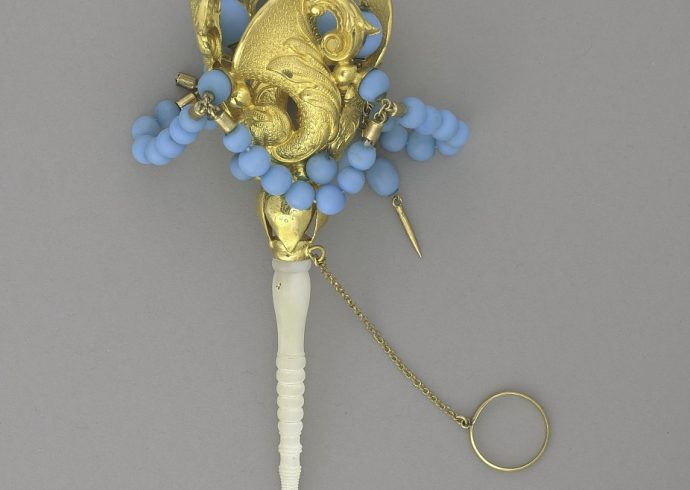
Collecting Brockwitz Carnival Glass
Founded in 1903, the Brockwitz glass factory of the town of the same name in Germany was one of the best known European manufacturers of early carnival glass which was in a class by its own. The lustrous sheen and elaborate, intricate patterns create a sunset of colors when combined together in a display. To behold such a sight is one that would without question please a king or queen. It was not long ago when there was some debate on when the glass company created its very first piece of carnival glass, but due to extensive research conducted by Dieter Neumann and Bob Smith, two glass experts who compiled a stack of historical glass catalogs including the 1915 Brockwitz Pattern Book, successfully traced the company’s first carnival glass pieces back to 1905.
When the Brockwitz glass factory first opened, the company started out with three hundred employees; by 1927, 1,200 employees worked for the company, a high number compared to the majority of American glass manufacturers, such as Indiana Glass Company, which employed just over 800 during the 1950’s. Seemingly so, Brockwitz could certainly afford to expand in only a few decades, considering its location by the Elbe River, plus the inexpensive lignite which fueled the eight melting furnaces in the glass factory. It was not long before the Brockwitz pressed glass gained a reputation among those who considered it a must-have in their households. Nothing was outsourced when it came to the manufacturing process: Brockwitz had in house moulds, designers, machinery and melting pots. Best of all, up to six different glass moulds could be used at the same time, an early form of mass production which retained the quality of a small glass manufacturer, creating each piece by hand. Needless to say, the functionality of the Brockwitz glass factory was impressive to those who were able to witness firsthand the procedures in motion. The factory also had its own property to house employees, a rare move at the time compared to glass manufacturers in England and the United States.
Brockwitz carnival glass was poured into the pressed glass moulds, then the iridescence was fired on to the glass, producing a high luster. Some of the Brockwitz carnival glass patterns include: Rose garden, Curved star, Oliven, Four Flowers Variant, Mystery Grape, Beaded peacock tail, Diamond swirl, Goddess epergnes, and many others. Just like their American counterparts, these patterns adorned tumblers, dishes, bowls, cups, vases, compotes, candlesticks, and many other practical items for home usage. Popular carnival glass colors used were amber, marigold, red, green, blue, and purple. From the 1930’s to 1940’s, Brockwitz produced art deco glass with patterns such as a serpent bowl with handles bearing the shape of serpents, and a vase with parakeets near the base. Brockwitz also produced Vaseline glass, also highly collectible.
By the mid 1940’s, the Brockwitz glass factory, which at one time turned out some of the most dazzling and beautiful pieces of glassware, discontinued its production and instead turned to the manufacture of glass for military use, during World War 2. Being located in East Germany during the 1940’s did not help either, with Russia controlling a portion of the country and extracting the tools from the Brockwitz factory. In the 1960’s, what was left of the glass factory burned down in a major fire.
Image Credit: Kingofbananas, via Flickr.


